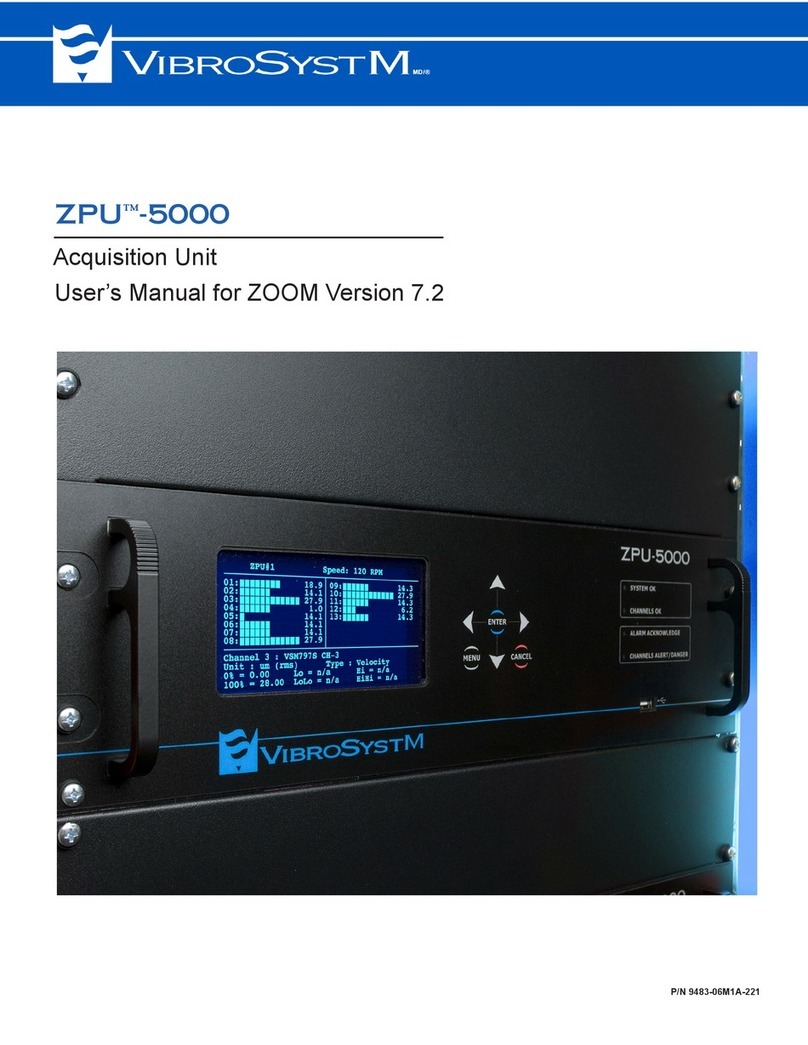
3
DMV-100 Rotor Creep and Speed Detector - Installation Manual
TABLE OF CONTENTS
1. OVERVIEW OF THE DMV-100 ROTOR CREEP AND SPEED DETECTION SYSTEM
2. INSTALLATION OF THE VM 3.12 AIR GAP SENSOR FOR MOVEMENT DETECTION
2.1 Preliminary considerations .................................................................................................................... 7
2.1.1 Supplies needed ........................................................................................................................ 8
2.2 Positioning the air gap sensor................................................................................................................ 8
2.3 Step by step installation of the VM 3.12 Sensor ................................................................................... 9
2.3.1 Preparation of Stator Surface.................................................................................................... 9
2.3.2 Glueing the VM 3.12 Sensor.................................................................................................... 9
2.4 VM 3.12 Sensor - General specifications.............................................................................................. 11
3. INSTALLATION OF THE TRIAXIAL EXTENSION CABLE
3.1 Preliminary considerations .................................................................................................................... 13
3.1.1 Supplies needed ........................................................................................................................ 14
3.1.2 Tools needed............................................................................................................................. 14
3.2 Step by step installation of the triaxial extension cable......................................................................... 14
3.2.1 On site preparation ................................................................................................................... 14
3.2.2 Installation of triaxial extension cable - sensor end ................................................................. 15
3.2.3 Silicone application .................................................................................................................. 20
3.2.4 Installation of triaxial extension cable - signal conditioning module end................................ 21
3.3 General specifications of the triaxial extension cables.......................................................................... 22
4. INSTALLATION OF THE DCC-631 MODULE FOR THE DMV-100 SYSTEM
4.1 Preliminary considerations .................................................................................................................... 23
4.2 Installation of the DCC-631 module ..................................................................................................... 24
4.2.1 Supplies needed ........................................................................................................................ 24
4.2.2 Tools needed............................................................................................................................. 24
4.2.3 Mechanical installation of the casing ....................................................................................... 24
4.3 Connecting the cable to the DCC-631................................................................................................... 25
4.4 LED functionality.................................................................................................................................. 26
4.5 DCC-631 Signal Conditioning Module - General specifications.......................................................... 27
5. INSTALLATION OF THE DMV-100 UNIT
5.1 General description of the DMV-100 Unit............................................................................................ 29
5.1.1 Overview of the DMV-100 Unit main components ................................................................. 30
5.2 Installation of the DMV-100 Unit in a 19” rack or cabinet................................................................... 33
5.2.1 Preliminary considerations for installation in a 19” rack or cabinet ........................................ 33
5.2.2 Required tools and supplies...................................................................................................... 33
5.2.3 Fixing the DVM-100 unit to the rack....................................................................................... 34
5.3 Cabling the DMV-100 Unit................................................................................................................... 35





























